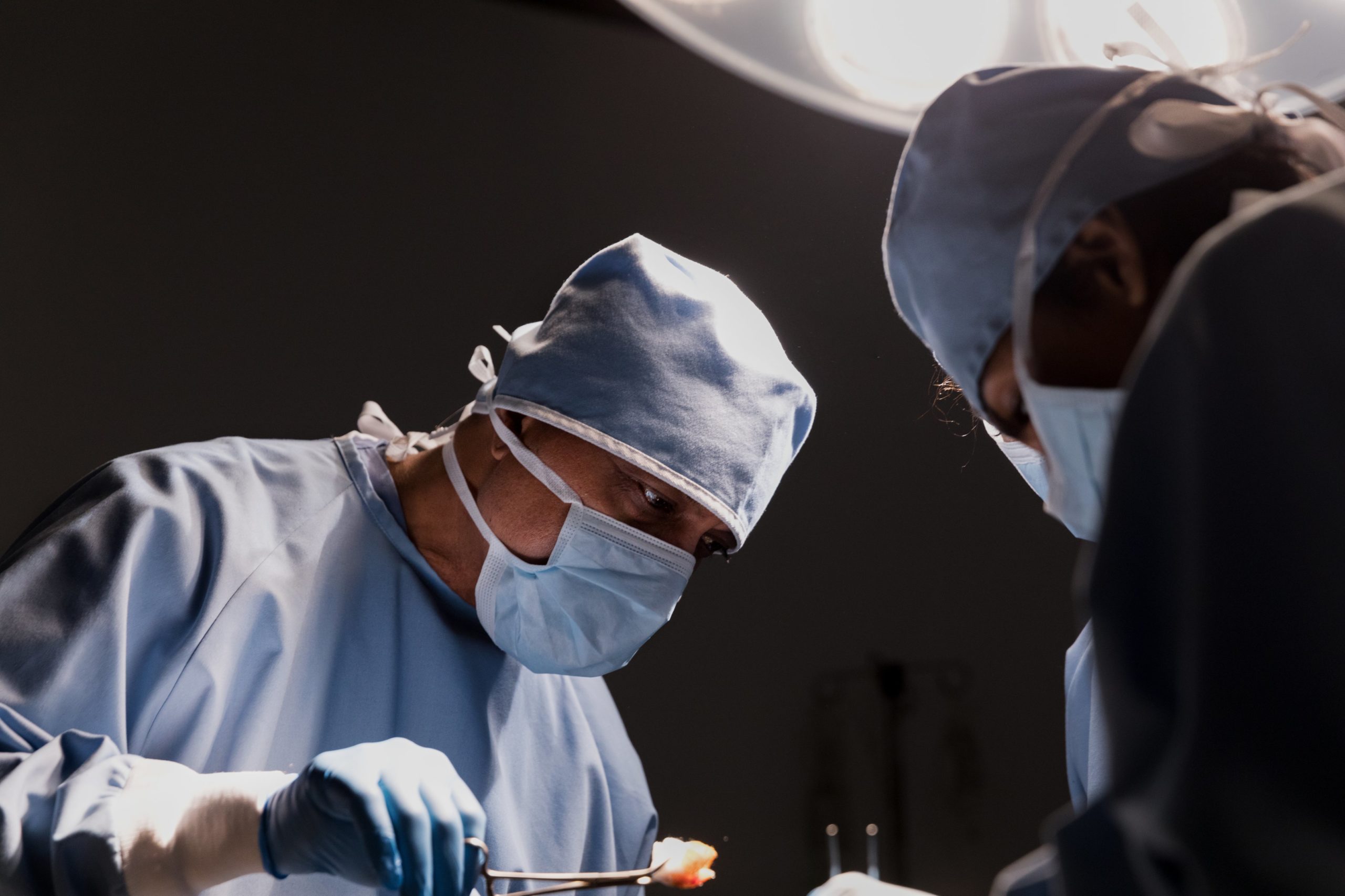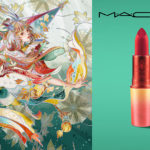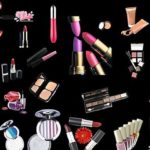Plastic surgery in market China: How China became the world’s second largest market
The plastic surgery market in China is skyrocketing: The country climbed to second place in the world for plastic surgery procedures
China performs more plastic surgery operations than any country in the world other than America. The plastic surgery market in China surpassed Brazil in 2017 to become the second-largest globally. Over 15 million licensed procedures were performed in China in 2017 with a yearly growth of 26.4%, and the number passed 20 million in 2018. This includes only the procedures performed by licensed plastic surgeons and this number is likely higher due to the presence of unlicensed plastic surgeons in China. The Chinese plastic surgery market, which barely existed 20 years ago, is now worth $14.09 billion (99.3 billion yuan, jumping from 41.9 billion yuan in 2013) and is projected to grow strongly over the next five years. China’s changing attitudes toward self-image, growing wealth, technological advancements, and its obsession with celebrity culture, are fueling this growth. In China, beauty is deemed as an advantage in the competitive mid-level workplace because job applicants are often required to submit a photograph with their application.
The profit margin of plastic surgery hospitals in China has increased by 15.2% in 2019. Micro-plastic procedures or cosmetic injections are the two fastest-growing sectors as they are considered as safer options with the least recovery time and side effects. The three most common procedures in China are double eyelid surgery, nose jobs, and liposuction.
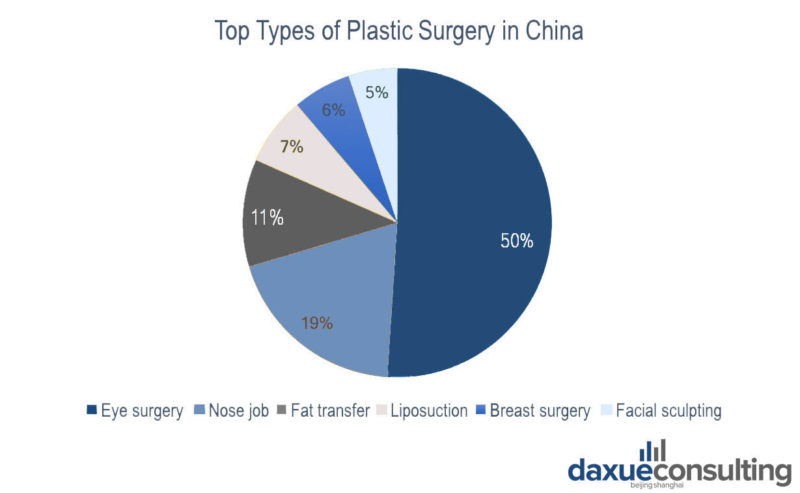
[Source: Mylike “Over 50% of the plastic surgery in China are concentrated on eyes”]
Growth of the plastic surgery market in China: New focus on young and low-tier city consumers
Young adults and recent high school graduates
Over 20 million Chinese have conducted plastic surgery in 2018 and most patients were in their 20s. The average age of customers is declining over the years to 24 years old. Over half of the patients are under age 28, with around 38% of customers aged 20 to 25 in 2019, according to the annual white paper released by SoYoung, a leading Chinese online platform for plastic surgery. The percentage of teenage customers who underwent cosmetic procedures doubled from 2018 to 2019: Plastic surgery has become a popular gift to teenagers after the national college entrance exam. This is a strategic moment for them as they have plenty of time to recover from the surgery during the holidays before university commences.
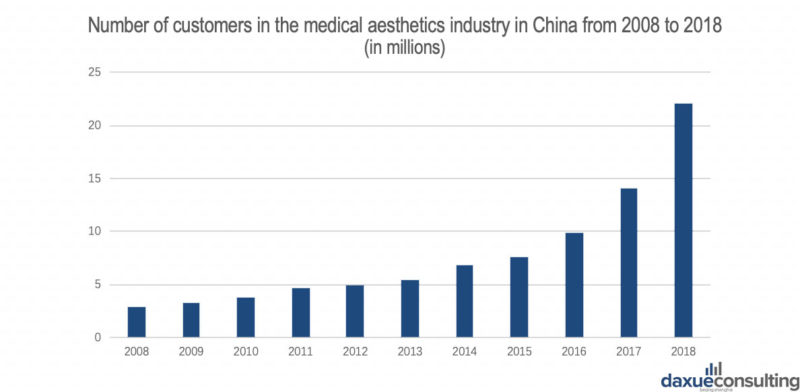
[Source: Statista “Number of plastic-surgery customers increased exponentially in China”]
Second-tier city residents
The number of customers from second-tier cities is also growing. While those from first-tier cities often turn to plastic surgery for stress-related issues, such as early aging, hair loss, and obesity, customers from second-tier cities undergo plastic surgery for improving sexual attraction. The market has also experienced a growing number of male customers in recent years. In 2018, approximately 15% of the total plastic surgery market in China value was dominated by male patients. Popular plastic surgery procedures among male consumers include hair transplant, eye bag removal, and acne treatment. Just like women, most male patients turn to plastic surgeries in their 20s to improve their professional and love life.
Driving forces of the plastic surgery market in China reflect a more sophisticated way of life
The burgeoning celebrity culture in China feeds young Chinese’s curiosity and interest in plastic surgery. News, gossips, and speculations about celebrities’ faces have become popular topics online, often accompanied by before-and-after photos for comparison. As the frequency of these celebrities’ operations increases, more and more young people are opening their views on plastic surgery. Some might even use celebrities’ appearances as “templates” for their own plastic surgeries. In particular, among the global celebrity trends, many Chinese plastic-surgery consumers favor K-pop celebrity faces and are heavily influenced by Korea’s standards of beauty. No wonder South Korea has always been one of the top medical tourism destinations for mainland Chinese consumers, with 56,000 Chinese tourists visited for plastic surgery procedures in 2014.

[Source: Weibo “Speculations about celebrities’ before-and-after faces on Weibo”]

[Source: Weibo “The latest so-called plastic surgery template – a Korean celebrity HongSuZu”]
2020 drivers of the plastic surgery market in China
If the reason for undergoing plastic surgery in the past was mainly to look like celebrities, it is now more complicated as social media plays a predominant role in the consumer market. Chinese youth are living in a time when connecting to strangers or friends online is very important and being attractive can help them gain social acceptance. Due to social media, some of them are leading dual life. When their real life is not going their way, their online image can still be positive. Social media is a place to show ownership of material things and a good life. Hence, the desire to look good is growing with social media usage. In addition, the growing “Wanghong” (i.e. Internet celebrity) effect and live streaming economy are fueling the plastic surgery market. Many Chinese plastic-surgery consumers believe that an appealing appearance can be monetized and ultimately make them a living.

The illegal plastic surgery market in China
Illegal clinics are becoming a large problem in the plastic surgery market in China. According to Gengmei, another leading online platform for plastic surgery in China, as of 2017, there were 60,000 unlicensed clinics and 150,000 unlicensed doctors in the market. This is six and ten times as many as their legal equivalents, respectively. 70% of China’s cosmetic procedures take place in unlicensed salons that offer simple procedures such as face-slimming injections. “It’s hard to root out the black sheep without efficient supervision and due punishment,” says Dr. Qi, echoing a broader Chinese problem. Some doctors, poorly paid in state-run hospitals, will moonlight in illegal salons.
In downtown Shanghai, one clinic offers eyelid surgery for 6,000 yuan ($950) and face-slimming injections for 1,000 yuan. However, the clinic could prove its doctor’s qualifications. When pressed for details about the injections provided, they claimed that the Chinese drug had the same effect as Botox but was cheaper.
Author: Wenxing Li
Let China Paradigm have a positive impact on your business!
Listen to China Paradigm on iTunes



